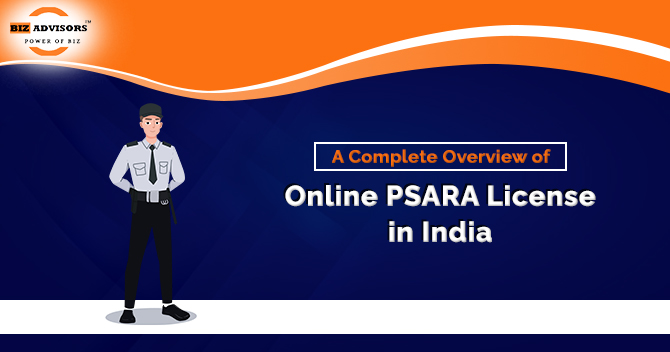Recent Budget 2021 addresses Asset Reconstruction Company. They are commonly referenced in the context of the business as a way to turn subprime debt into a valuable asset. When we borrow money from a bank, the bank gets the ownership of our debt obligation. The regular installment includes interest payments as well as a contribution to the basic loan balance. There are instances where debtors are unable to make the required payments because of financial strain. As a result, the asset included on the bank’s balance sheet is now considered “doubtful.” These debts are referred to as “non-performing assets” when they go long periods without being repaid. For the bank, this represents a loss. Reconstruction of assets is necessary for this situation. Asset Reconstruction Company buys the bank’s or financial institution’s right to realize the value of such assets. In this article, we will examine the Asset Reconstruction Company’s structural framework and a variety of its constituents.
Asset Reconstruction Company
A financial institution that obtains NPAs (non-performing assets) from banks and elongates up their balance sheets is referred to as an asset reconstruction company. Fundamentally defined, ARCs are in the business of buying defaulted loans from banks. This enables the banks to completely refocus on their core competencies. The need for the banks to follow up with the clients to recover the debt is reduced because of an Asset Reconstruction Company.
Asset Reconstruction Company under the SARFAESI Act of 2002
In India, ARCs can be established legally due to the Securitization and Reconstruction of Financial Assets and Enforcement of Security Interest (SARFAESI) Act, 2002. The Act’s Section 2 (1) gives a clear definition of asset securitization. The Act’s Section 3 also defines Asset Reconstruction Company as such. The SARFAESI Act offers assistance with the reconstruction of inadequate assets without court intervention. Currently, the RBI’s regulations are being followed by a big proportion of Asset Reconstruction Companies around India.
RBI Guidelines for Asset Reconstruction Company and Securitization Corporations
Some regulations about securitization and Asset Reconstruction Companies (ARCs) were enacted by the Reserve Bank of India.
The Reserve Bank introduced the Guidelines & Directions, 2003 for these entities in light of the SARFAESI Act:-
- The majority of the functional component of the guidelines applies to an asset acquisition by a SARC but does not become active if the asset is held as a trustee, which is an exemption to the directors’ scope.
- To be exempted from the rules, the SARC must own assets in such a trust and act as its trustee.
- As stated in “Framework for Revitalized Distressed Assets in the Economy- Directions relating to Corrective Action Plan (CAP),” SCs and RCs are required to join JLF (Joint Lender’s Forum) and include JLF in the process when dealing with such challenged securities.
- When transfers give birth to a substantial change, SCs and RCs must request clearance from the RBI.
Asset Reconstruction Company Registration under the SARFAESI Act
The following are the essential factors to register an Asset Reconstruction Company under SARFAESI Act:-
- Every Asset Reconstruction Company must submit an application using a template provided by the government.
- According to Section 3 of the Act, the company must get a registration certification from the bank.
- After obtaining the necessary certificate, such a corporation is able to engage in securitization and asset reconstruction activities.
- Within six months of the registration certificate’s issuing, the company must open for operation. However, in exceptional cases, the authority may grant the corporation an additional 12 months in this regard.
- Section 3 of the SARFAESI Act, 2002[1] states that an NBFC certified as an SC or RC with a bank is exempt from the provisions of sections 45 -IA, 45-IB, and 45-IC of the RBI Act, 1934.
What are the permitted business activities for an Asset Reconstruction Company?
Below mentioned are the points which reflect the list of activities that are permitted for an Asset Reconstruction Company:-
- Can engage in operations associated with securitization and asset rebuilding.
- Cannot, obtain funds through the utilization of deposits.
- The termination of registration would apply to any business operating in violation of the law.
Conditions
In terms of net owned money, capital, etc., there are certain necessities for Asset Reconstruction Company, which are as follows:-
Net Operated Capital
- The Net-owned fund of the Reconstruction Company shall not be less than the lower benchmark limit, which is Rs 2 crores or another greater amount established by the RBI.
- Any SC or RC engaging in entrepreneurial operations must have a required Net Owned Fund equal to 15% of the overall economic interests they have acquired collectively, or Rs 100 crores, whichever is less.
- The minimum net-operated capital must be periodically retained.
Satisfactory Demand of Capital
- All Securitization Companies or Reconstruction Companies (SC/RC) are required to maintain a capital adequacy ratio that cannot be less than 15% of their total risk-weighted assets.
- The weighted average of the previously specified on-balance sheet and off-balance sheet information must be used to calculate risk-weighted assets.
How do Securitization Corporation (SC) and an Asset Reconstruction Company use their money?
An Asset Reconstruction Company and Securitization Firms utilize their funds in the following manner:-
- The equity share capital for Asset Reconstruction Company is invested in by an SC/RC as a promoter and to establish a joint venture.
- Due to the policy established in this context by its BODs, SC/RC may elect to invest any excess funds only in government securities with the Small Industries Development Bank of India, scheduled commercial banks, National Bank for Agriculture, or other entities that the bank may occasionally specify.
- If SC/RC invests up to 10% of its fund in housing and construction for its use, the limitations won’t apply to that investment. Otherwise, SC/RC is not accountable for doing so.
Monitoring Standards
- A quarterly statement, referred to as SCRC 1 & SCRC 2, must be provided by each SC/RC to the RBI within 15 days of the completion of the quarter.
- Each SC/RC is mandated to provide banks with a draft of the certified balance sheet.
- Additionally, they must deliver directors’ and auditors’ reports by a month after the AGM when the audited SC/audited RC’s account is approved.
- Periodic audits of enterprises may be conducted by private or independent organizations.
Conclusion
The main objective of Asset Reconstruction Company is to assist banks in resolving their financial problems that arise as a result of a surge of faulty loans. Banks can completely redirect their attention to operations that are most important after distributing the problematic loan to these enterprises. Asset Reconstruction Company, a central agency, acquires subprime debts from financial institutions by following a legislative framework. So, as long as possible, they permit banks to function without interruption. Seek professional advice for Asset Reconstruction Company. You can also reach Bizadvisors.io for more information.
Read our article:A Complete Guide on NBFC Compliance under FEMA
 9559179325
9559179325 9559179325
9559179325





